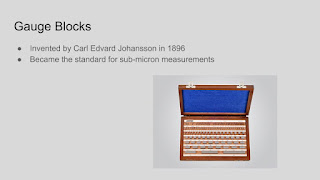This is part two of what is now obviously going to be a three-part series on a detailed look at engineer Chris Dunn's book, "Lost Technologies of Ancient Egypt". In this part, we go back to the beginning of the book where Dunn is studying aspects of the many enormous monolithic statues that can be found in temples all over Egypt. Again and again, his studies find evidence of advanced planning, advanced machining, and the ability to check precision to a very high degree of accuracy.
We also read some very interesting accounts from the book, taken from the writings of explorers from previous centuries who delved into the Serapeum tunnels when the entrance was still concealed under sand.
There is so much information in this book! Part three coming next week.
Enjoy!
Sunday, October 6, 2019
Episode #117: The History of Precision
Archer joins us again in the Tangent Cube to give a slideshow presentation about precision. What does it mean to do precision work? How do you get a perfectly straight edge, or a perfectly flat surface? How do we do it in the modern day, and what does that mean for highly precise work done in ancient times?
This was an awesome conversation. We really recommend watching the youtube video so you can see the slides.
Enjoy!
Here is the YouTube Video:
Below are some of the slides from GMA's presentation:
This was an awesome conversation. We really recommend watching the youtube video so you can see the slides.
Enjoy!
Here is the YouTube Video:
Below are some of the slides from GMA's presentation:
Subscribe to:
Posts (Atom)































































